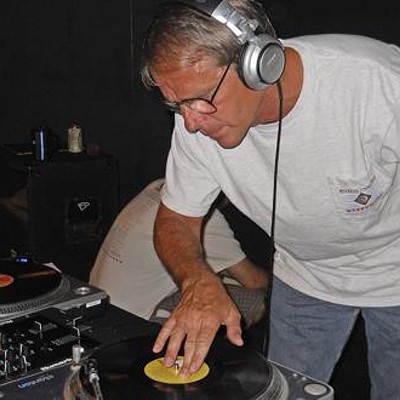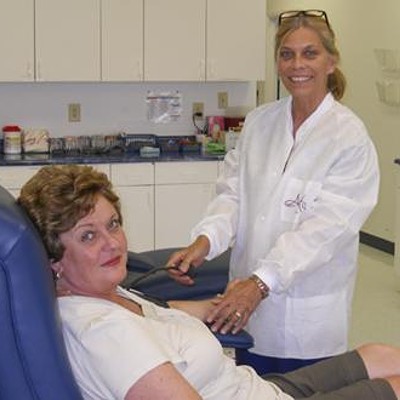Taking stock of Katrina, two years later
Anniversaries are good reasons to catch up with friends. With Wednesday, August 29 marking the two year anniversary of Hurricane Katrina’s landfall in the Gulf Coast, it was time this past weekend to check in with Chris Hathaway, 72, and Lois Kelly, 81. The sisters live in Long Beach, Mississippi, a town in the Gulfport metro area that was slammed by the storm.
Last July we became friends when a team from Savannah Presbytery repainted Lois and her husband’s house. About once a month since the storm, Presbytery volunteers from Savannah and south Georgia have made the ten hour drive to Long Beach to assist with clean up and repair.
Both Lois and Chris report that on the whole, things in Long Beach are looking up.
“The beach is open this year,” says Chris. “The streets of Long Beach are still bad, but they’re beginning to fix them.”
Long Beach’s main street is mostly back in business, with two banks, Little Ray’s restaurant, and a flooring store.
“City Hall is still in trailers north of town, but the library is open,” says Chris.
The major Katrina damage to Long Beach occurred when a 30-foot tall storm surge from the Gulf of Mexico washed over U.S. 90 and into the first several blocks of the town, damaging beyond repair hundreds of new houses, old houses, apartments, gas stations, fast food restaurants, the K-Mart, an elementary school, several banks, and the Baptist and Catholic churches.
“They are just now getting the water and the sewage in,” says Lois. “They had to lay temporary pipes. The town is cleaned up, the lots. The Waffle House has been built back but they can’t open until they get the water in.”
The numbers are complicated. In total, 1,954 properties in the town sustained at least 50% damage, including 1,085 that were completely destroyed, according to Long Beach Mayor Billy Skellie. Each property might be a single family house, a small commercial shopping strip, a duplex or a large apartment development on a single parcel.
In all, 1,300 Long Beach rental units were lost in the storm. This in a town of 18,000 people, with an estimated 6,000 housing units before the storm.
One of those demolished properties was a 365-unit apartment complex.
“They’re building those back,” says Skellie. “We are really excited about that. Those are the only larger units building back right now.”
“A big impediment to rebuilding is the increased insurance rates,” he says. “It’s quadrupled since pre-storm. A $1500 policy is six grand, fifty-five-hundred, it makes it so a person just can’t make a payment.”
“I feel normal at my house,” says Chris. “Everything is not normal on the beach. Things are looking better, but I can’t say you would use the word normal.”
“I was so terribly upset over this storm and what it had done to our town. Not so much to me,” says Lois, “I have felt so blessed. I don’t dread August the 29th. I don’t dwell on how bad it was.”
Chris, retired from a nearby naval base, stays busy with friends and church, and with her part time job with a real estate magazine. She continues redoing her house, some leftover hurricane damage, some purely cosmetic work. Lois gardens, sews, and will cook an old fashioned dinner of fried catfish, red beans, and vegetables for anyone who mentions they’re hungry—especially house-painting volunteers. She just finished making new drapes for the Skellie family. Her daughter is the mayor’s secretary, and they’re all family friends.
How are people’s spirits in Long Beach?
“You never hear mention of it,” says Lois. “They’ve got a place to buy groceries, to go shopping you’ve got to go north.
“I think people have lived here so long ‘til this is just a way of life. We’ve been through lots of storms, you live here and you just accept whatever is handed to you. I don’t hear any moaning and groaning, maybe I’m not listening to it.”
“I think it’s still pretty upbeat, but I think people are starting to get anxious,” says Skellie. “Things are getting done but you just don’t see it. It’s not a two year process, it’s a four or five year process, with the devastation and the slow wheels that FEMA uses to ride on.”
After two years, out of state volunteer teams are less prevalent, but Lois and Chris still sees church vans from Georgia or Ohio pass through. Skellie says the need for skilled labor volunteers remains high—people that can hang sheet rock and run wiring.
The retired Bellsouth technician had been mayor for only ten months when the storm hit. Rebuilding after Katrina completely changed his mayorial to do list.
Has Skellie run any phone cable recently? “Bellsouth called me after the storm to see if I would come back. I said, ‘I’m sorry, I have a job.’” 
E-mail Robin at [email protected]
























